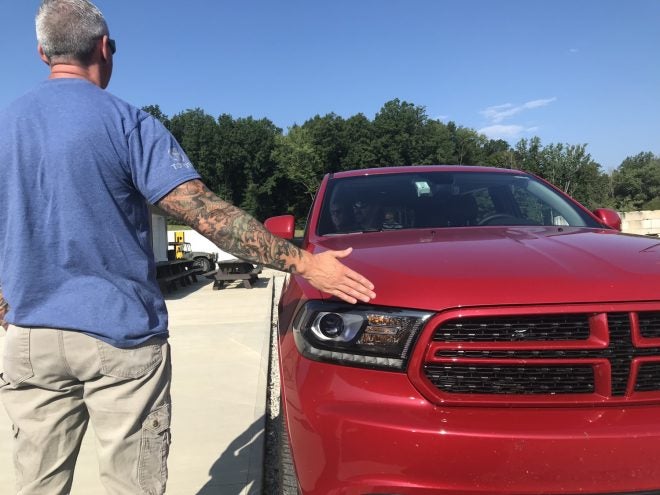Alexander Global Strategies
I recently attended Law Enforcement Protective Operations with Alexander Global Strategies. This was a 5 day course at the Alliance Police Range in Alliance, Ohio. This course teaches the fundamentals of executive protection. Due to the student base of this course, content focused on departments providing or assisting a protection team. However, the same information could be used by the private citizen to protect their significant other.
Class Makeup
The class was primarily made up of police officers looking to expand their protection capabilities. The rest of the class was industry reps, instructors and responsibly armed citizens. Varg Freeborn, the author of Violence of Mind, also attended the class. He provided great insight and behavioral analysis during some of the instructional videos.

Here we see a dry fire run with reaction to contact.
#NOTABODYGUARD
When people think of executive protection they think of large, aggressive thugs with abrasive personalities. This couldn’t be further from the truth. An executive protection agent or protection specialist is a critical thinker and problem solver. Their job is often to blend in to their environment.
Information
Information is key to proper protection. Much of the success or failure of a detail revolves around the advance. The advance is a single or group of protection specialists that goes ahead of the detail. They and ensure the scene is safe and things run smoothly once the principal arrives.
Harm and Embarrassment
A fundamental element is understanding the job is not only to protect the client from physical harm, but embarrassment. This can come in many forms. Protection specialists must always be thinking ahead. An uncovered cord could result in a tripping hazard when walking on stage. A protester could be waiting to throw blood or an egg on the principal. Both scenarios are different but result in embarrassment. A good way to understand it is to understand that you are protecting the person and that person’s brand.
Gear
Often with executive protection we think of spy gear and guns. Guns are a great tool and concealment is essential, but they are not always an option. Some locations even a protection specialist may not be able to carry. Having a quality flashlight and medical equipment such as a tourniquet, compression bandage etc. are very helpful. These can be carried anywhere. Other important things to carry are decent sums of money in cash, a notebook, binoculars, Tylenol, nausea medicine or an umbrella. The exact kit will vary based on the daily schedule, client’s needs and numerous other factors. Thinking ahead and being able to address issues quickly is important.

Shown here is a prototype product from PHLSTER to keep medical gear organized and compact in a backpack.
This course did not have significant gear requirements, but definitely dove into some great options for gear. To see gear requirements for this course and the gear I chose click here.
Positions
Individual positions are helpful for organization and dispersal of tasks within a team. In an ever-changing environment it is easy for roles to change. Adapting to these changes can only be accomplished if members have a handle on the responsibilities of each position.
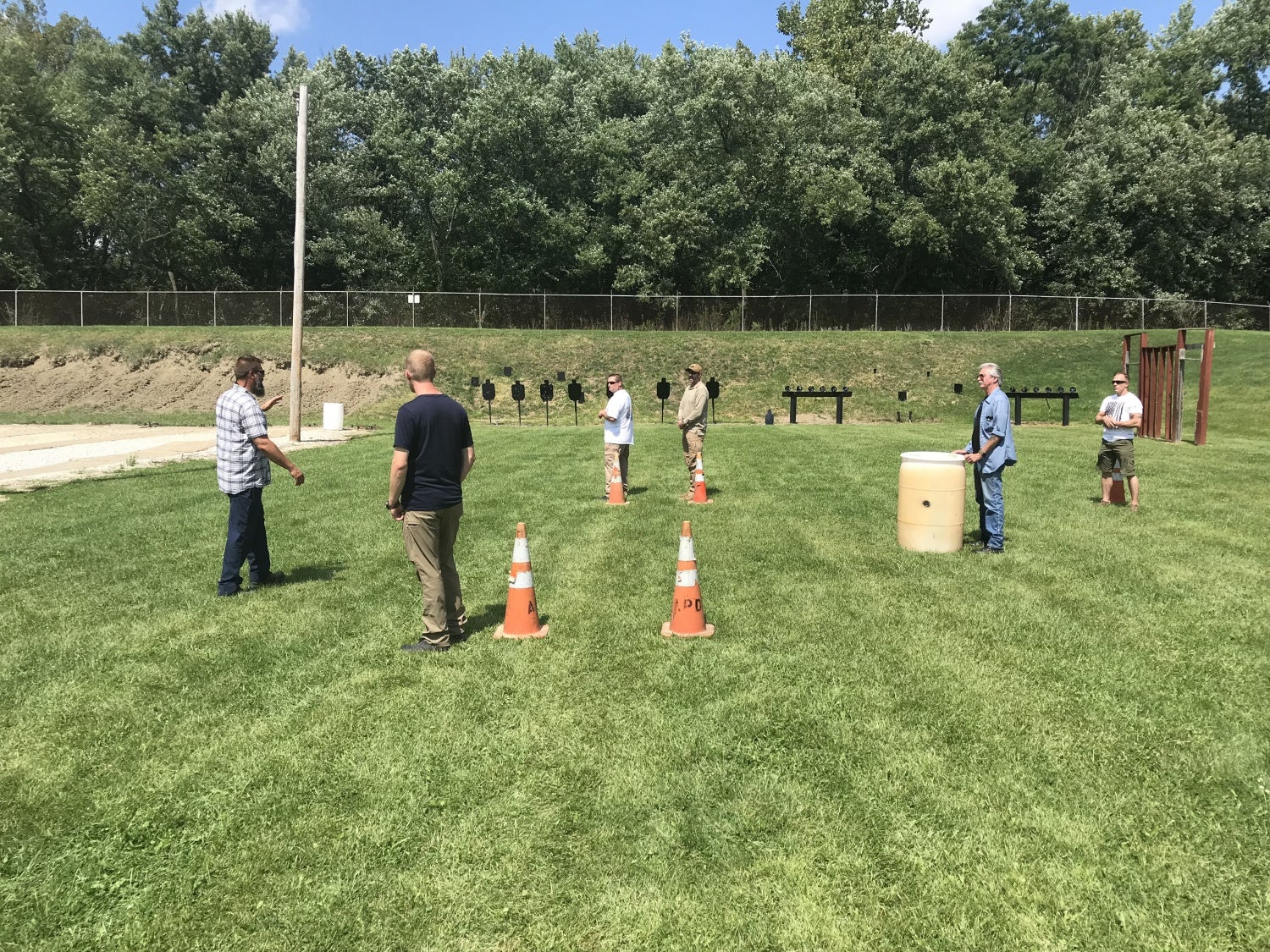
Here we see the team working a mock stage for arrival and departure.
Large to Small
To understand protection we focused on a large team of 8 protection specialists plus a client. Learning protection in this formal, higher profile nature showed the importance of each position. Many details may only have 1 or 2 protection specialists. However, if they receive more, it will be easy to assign a specified role to each member instead of simply adding bodies.

Working with a team door procedures are important to rehearse. It is easy for the detail to look like a clown show in front of the client if such procedures are not rehearsed and well understood by all members of the team.
Shooting Portion
While the majority of a protection specialist’s job does not revolve around firearms it is still an essential skill. Protection specialists must have be capable shooters. This must also include the ability to conceal well and fight from concealment.
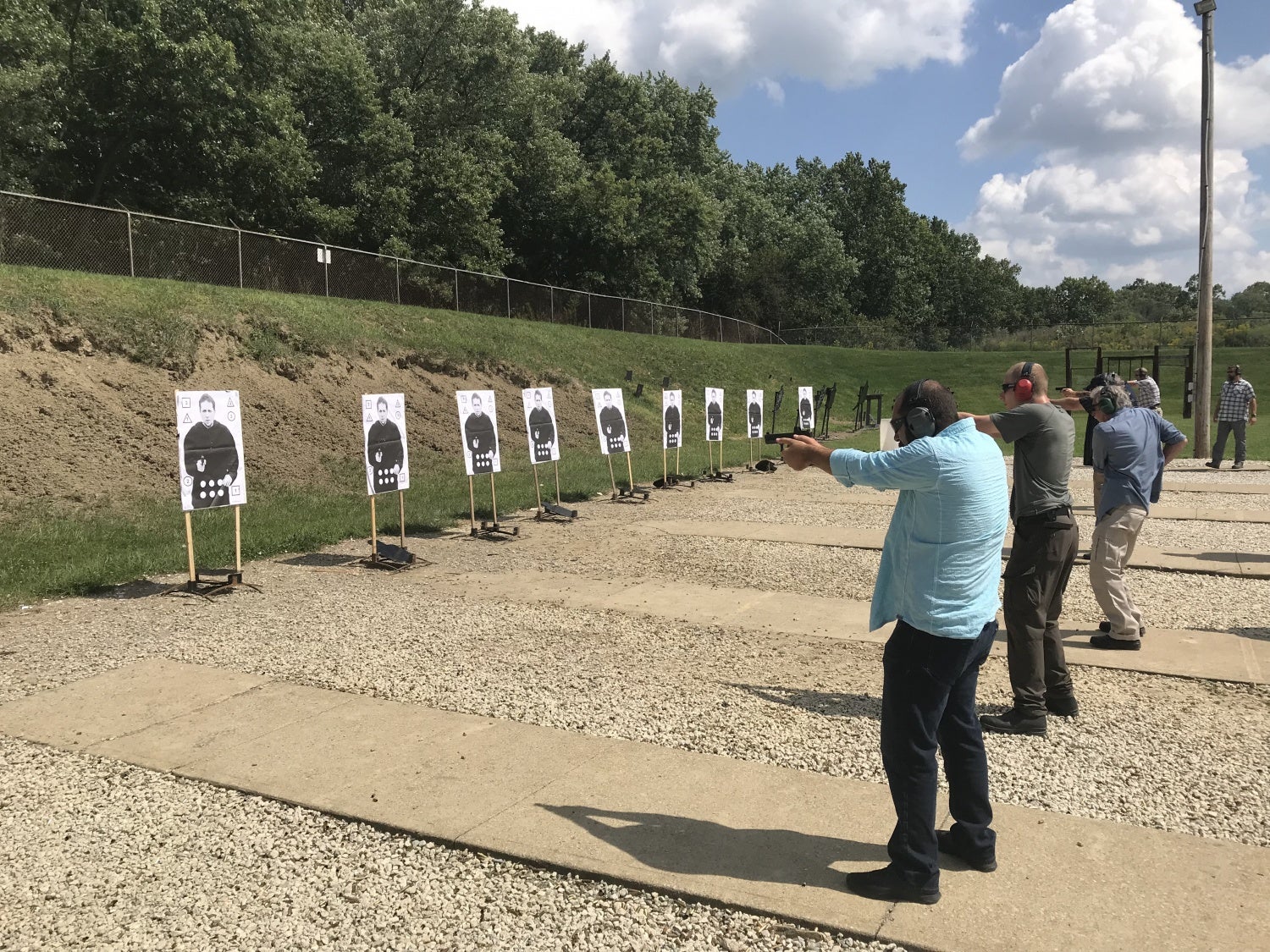
Everyone was expected to have fundamental shooting skills as prerequisites to the class. We began with a few courses of fire to assess safety and shot groups. After assessing shooting skills with one and two hands, we started working from concealment. Bryan demonstrated drawing from concealment with buttoned and unbuttoned concealment garments.
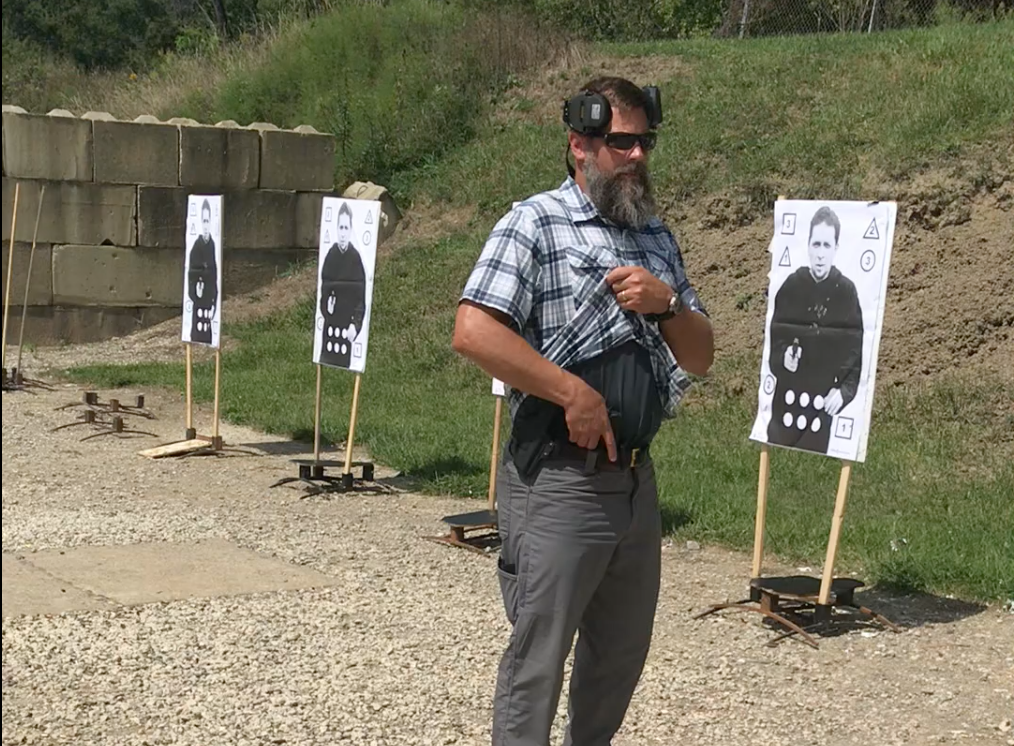
Bryan took great care to address different draws from concealment and gave many suggestions for small improvements.
Next we worked some reaction to contact drills with a principal and agent in charge (AIC). The AIC is the person responsible for close protection of the principal and should remain as close as possible. Some scenarios required the AIC to shoot, but often his sole purpose is to get the principal out of harm’s way.

Bryan demonstrates protecting and controlling a client while engaging a close threat.
Planning
As before mentioned, a team’s success or failure in protection revolves around information. Planning the operation, creating a thorough client profile and having a proper client threat assessment is essential.
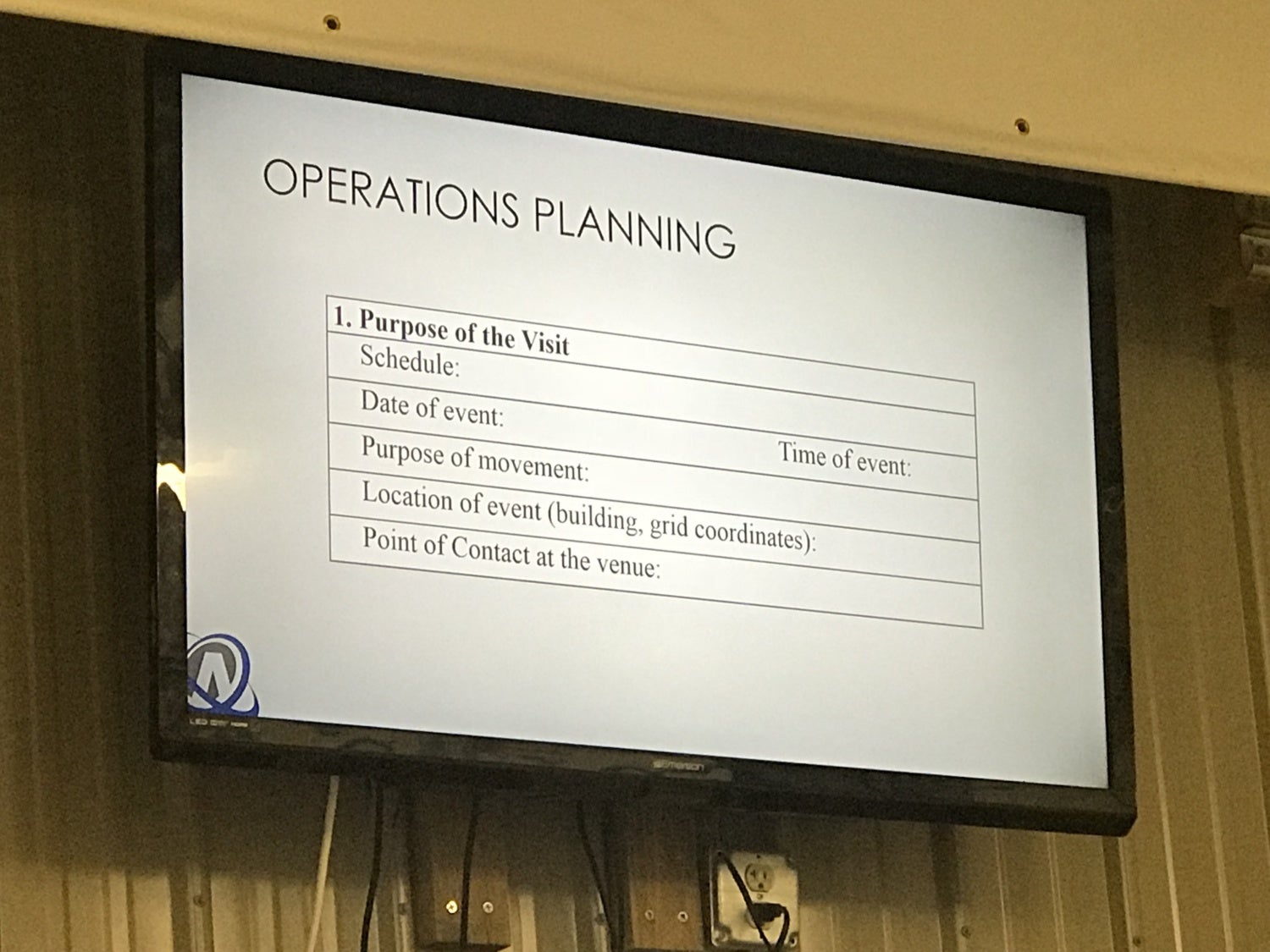
The power point was well structured and matched up with a printed binder given out at the beginning of class.
Day 4 we spent much of the day learning what information to gather and how to organize it. We were then released into 2 teams to start gathering the information based on the briefs we were given on our scenarios. Watching another team work through their scenario and hearing their brief was beneficial. Seeing the same types of problems solved helped show strengths or weaknesses in our approach.
Final Scenario
For the final scenario our team chose to wear full suits. That definitely made us stand out during the scenario in small town USA. Both teams started their briefings early day 5 to stay on schedules we created the day before. Throughout the day both teams were thrown some curveballs and unexpected stops and we adjusted pretty smoothly on the fly.

Had we dressed down the scenario would have gone smoother and been less overt. I do wish the course was 1 day longer. An extra day to go through a more guided day of advance work would have helped solidify “best practices”. However, I completely understand why the class is set up in a 5 day format from a logistical standpoint and was happy with what I learned.
Personal Assessment
I can think of no better instructor than Bryan Hillis for this course. Not only does he have extensive experience, but he is still actively working as a protection specialist. His ability to teach and coach is also very apparent early in the course. One major skill I realized early on was the importance of networking. Bryan tells stories to help illustrate points during the lesson. They help better understand the material and are not simply war stories for personal gratification. These stories reinforced the importance of networking and the professionalism needed as opposed to the bouncer or bodyguard persona.
The course was shorter than many of the alternative courses I looked at attending. This cut down on cost and I do not feel like I missed out on any crucial information. The study day and final training scenario day were well crafted and gave us a far better understanding than if we had only had classroom lecture. For anyone looking to become a protection specialist or continued training I would recommend this course.

Bryan did a great job of making scenarios as real as possible with arrivals, departures, the shooting package and the full day mock detail.
 Your Privacy Choices
Your Privacy Choices
